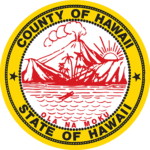The County of Hawaiʻi’s Sister City Program launched the new initiative, ‘Ale Lau Loa, to promote cultural learning and exchanges between high school students, with an emphasis on sharing Hawaiian culture and knowledge.
Led by the County and created in partnership with the Thirty Meter Telescope (TMT) International Observatory, the program provides an immersive learning experience that allows local youth to explore first-hand the history, values, and customs of traditional and indigenous cultures across the globe.
In a press release Mayor Mitch Roth said, “Our main goal is to invest in our keiki to help them grow into leaders who can create a better future for Hawaiʻi. Through cultural exchanges like this, we give them the chance to learn from different cultures, helping them understand and appreciate diversity and opening doors to new opportunities. We believe that by empowering our youth in this way, we can create a more inclusive community where everyone can thrive and contribute to making the world a better place for all.”
Next month, the County will begin accepting applications for the next trip planned for this summer to North America, with up to 10 students being selected. Locations are currently being finalized. The program is open to sophomore and junior students attending state Department of Education schools, including charter schools.
To qualify, students need to either speak ʻōlelo Hawaiʻi or be practicing Hawaiian culture and be recommended by a teacher. Applications are reviewed by a selection committee, with preference given to students who demonstrate financial need or lack the means to travel. Students who are interested in the program can contact their school principal for more information.
‘Ale Lau Loa began in 2023, with six Hawaiʻi Island students visiting two sister cities in Okinawa, Japan, as part of an all-expense paid trip, last October. During the trip, students were welcomed by the mayors of Nago City, Kumejima town, and the Okinawa prefectural government assembly chair. Students visited three schools and shared hula, oli, and Hawaiian language with local students.
In return, they learned Okinawaʻs history, language, traditional Eisaa drumming and the sanshin musical instrument. They also visited the Okinawa Churaumi Aquarium & Oceanic Culture Museum, planted coral reef seedlings in Onna village, did stargazing with students in Nago, and toured the Shuri Castle and Okinawa Institute of Science and Technology Graduate School.
